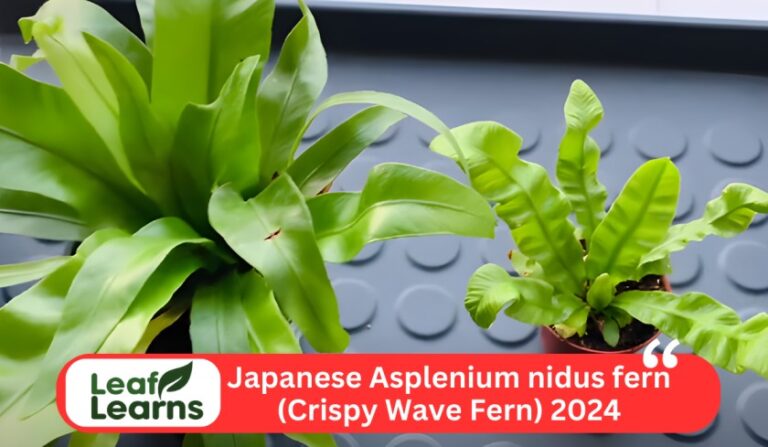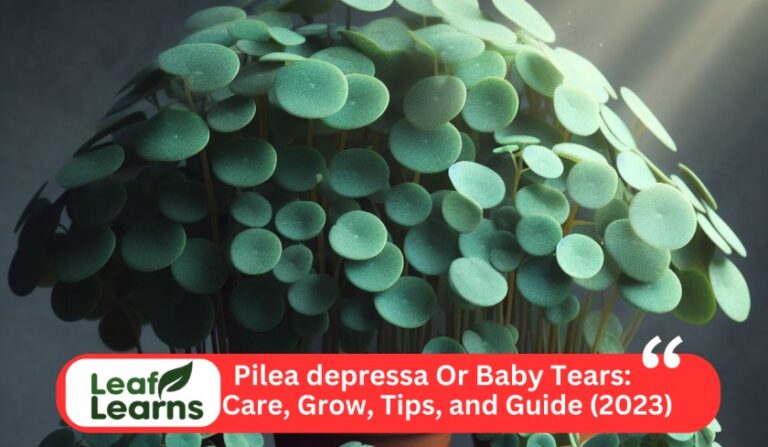Delosperma Echinatum | Pickle Plant Care and Grow (2023)
In addition to its name, Delosperma echinatum can also be called “pickle plant” because it is native to South Africa. Leaves of this plant are fleshy, pickle-shaped, and covered with soft, white hairs.
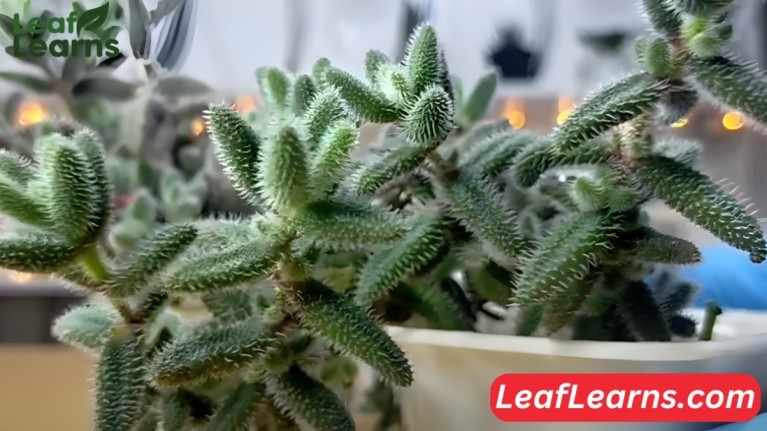
Growing low and spreading widely, it has a low growth rate. Bright yellow pickle plant flowers are most noticeable in spring and summer. A traditional use of this plant is as a rock garden plant, a container plant, and a groundcover plant.
Origin
The Delosperma-echinatum plant is native to the South African coast and grows in rocky areas. Plants can survive in poor soil conditions despite the hot, dry climate. It is a hardy plant that requires little maintenance, and it is versatile.
Early Discoveries
The 18th-century French botanist Jean Lamarck discovered Delosperma echinatum, which has been recorded ever since. Originally called Mesembryanthemum echinatum, it was reclassified as Delosperma echinatum by Nicholas Edward Brown in 1928.
| Common Name | Pickle Plant or Ice Plant |
| Scientific Name | Delosperma-Echinatum |
| Family | Aizoaceae |
| Origin | Native to South Africa |
| Plant Type | Succulent, Perennial |
| Size | Low-growing, Compact |
| Lifespan | Perennial |
| Leaf Colour | Green, Varies |
| Leaf Size | Small, Fleshy |
| Flower | Vibrant, Gherkin-like appearance |
| Light | Full Sun to Partial Shade |
| Water | Low to Moderate |
| Soil | Well-Draining, Sandy, Loamy |
| Temperature | Hardy to Colder Temperatures (Winterhart) |
| Humidity | Low to Moderate |
| USDA Zone | 9 – 11 (Can vary based on specific conditions) |
| Fertilizer | Diluted, Balanced Fertilizer during Growing Season |
| Propagation | Cuttings, Division, Seeds |
| Pruning | Minimal, Deadheading for Continuous Blooms |
| Pests | Resistant to Common Pests |
| Toxicity | Non-toxic to Humans, Cats, and Dogs |
| Uses | Ground Cover, Rock Gardens, Containers, Landscaping |
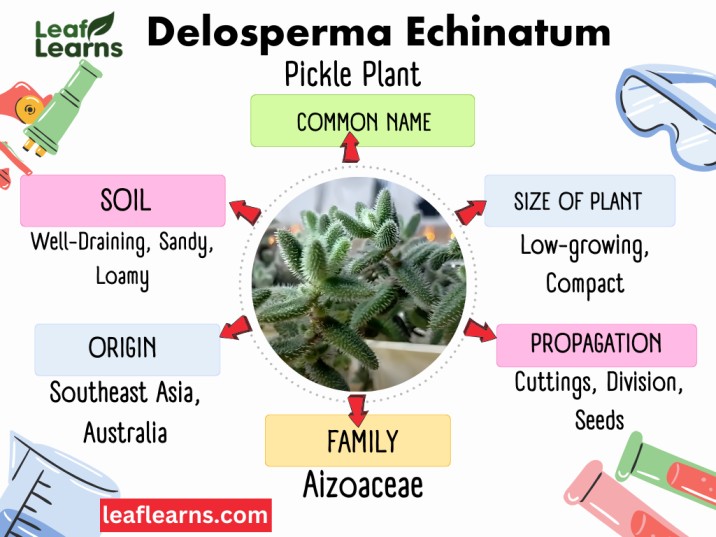
A beautiful and adaptable plant, Pickle Plant has quickly gained popularity among horticulturists all over the world. but it’s spread to Europe, North America, and Australia, where it adds beauty to gardens and landscapes.
Symbol of Resilience
It is a symbol of resilience that Delosperma echinatum thrives in challenging environments with little care. The plant is drought-tolerant and tolerant of harsh conditions, making it a popular choice for arid regions.
Importance of Proper Care
Delosperma echinatum can be grown in a variety of environments when properly cared for. A well-drained soil and full sun are essential for growing your plants.
It is drought-tolerant and only requires watering at the end of a dry spell. Rotten roots are caused by overwatering.
There are also mealybugs and scale insects that can damage Ice Plant. The best way to eliminate these pests is to use neem oil or insecticidal soap.
Contents
- 1 What’s Unique About Delosperma-Echinatum?
- 2 Top Care Tips
- 3 Delosperma echinatum or Pickle Plant Care
- 4 Delosperma Echinatum or Pickle Plant Propagation
- 5 Pruning and Repotting
- 6 Blooming and Growth
- 7 Delosperma Echinatum Growth Rate and Size
- 8 Pickle Plant Flower and foliage details
- 9 Appearance and Fragrance
- 10 Pickle plant Problems and Solutions
- 11 Overwintering precautions
- 12 Overwatering and Underwatering
- 13 Pests
- 14 Diseases
- 15 Toxicity in Humans
- 16 Pickle Plant Toxic to Cats and Dogs
- 17 Varieties
- 18 Practical and aesthetic uses in gardens and landscapes
- 19 Cultivating Healthy Ice Plant: Essential Care Practices
- 20 Delosperma-Echinatum Grow and Unique Characteristics
- 21 FAQs
What’s Unique About Delosperma-Echinatum?
It requires little maintenance. Soil with good drainage and full sun are ideal, but some shade is okay as well. This plant is drought-tolerant since it requires little water.
In addition to having attractive foliage, Ice Plant blooms prolifically. There are yellow blooms on the plant in the spring and summer that resemble daisies. Flowers provide nectar to bees as well as pollination.
Rock gardens, xeriscape landscapes, and container gardens are great uses for it. You can grow it indoors as a houseplant.
Here are some of the things that make it unique:
- Its pickle-shaped leaves
- Its sparkling appearance
- Its prolific blooming
- Its versatility
Top Care Tips
- It is essential that pickle plants receive at least 6-8 hours of direct sunlight every day, as they thrive in the warmth of sunlight.
- A drought-tolerant succulent, Pickle Plant prefers frequent deep watering sessions instead of constant moisture.
- For pickle plants to grow well, the soil must drain well in order to avoid waterlogging and root damage.
- In spring and summer when pickle plants are actively growing, they benefit from a boost of nutrients.
- Provide adequate light and reduce watering as winter approaches.
Delosperma echinatum or Pickle Plant Care
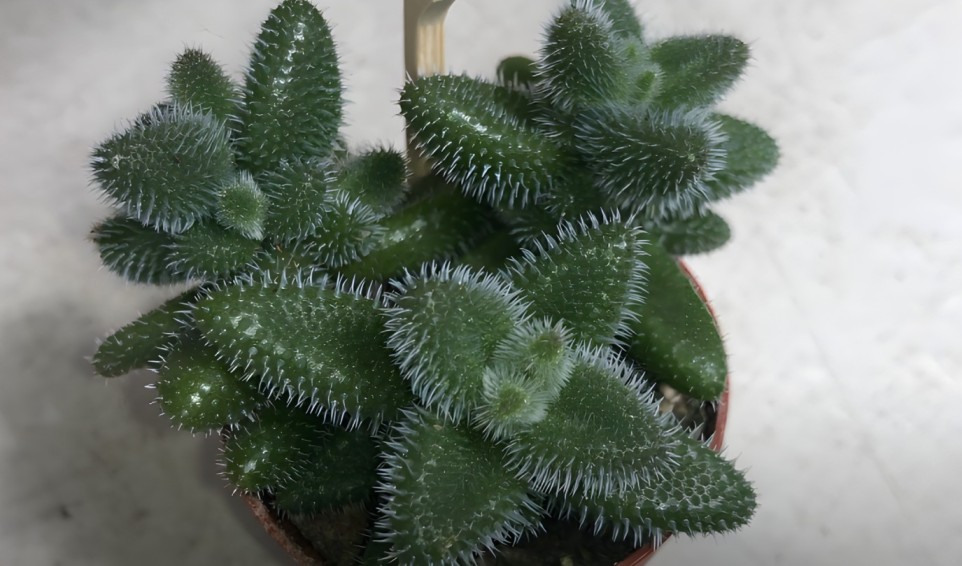
Light requirements for optimal growth
In bright, sunny environments, Ice Plant thrives. During the day, it needs at least six to eight hours of full sun.
If you want to protect it from the hottest sun in the summer, provide some afternoon shade. To thrive in the winter, it will need some sunlight, but it will tolerate some light shade.
Plants grown in full sun grow taller than those grown in partial shade.
It requires the following amounts of light:
- Spring: Provide full sun or partial shade.
- Summer: Provide full sun with some afternoon shade.
- Fall: Provide full sun or partial shade.
- Winter: Provide some light shade.
Pickle Plant Watering Requirement
In arid environments, pickle Plant grows well with little water and has adapted to flourish in arid climates.
Seasonal Watering Needs
- When the soil is completely dry between waterings, Ice Plant may need to be watered once a week during the hot summer months.
- Water your plants just once every two weeks in the fall as the summer heat subsides.
- When plants are dormant during winter, they require little watering. Do not water the plant until it looks wrinkled or shriveled, and allow the soil to dry completely between waterings.
- The frequency of watering should gradually increase in spring as temperatures begin to warm.
Tallness
A succulent that typically reaches a height of 6 to 12 inches, Pickle Plant is a low-growing plant. It is possible to grow some varieties as tall as 24 inches, however.
Delosperma echinatum Soil Requirement
It grows best in well-drained soil and is commonly called pickle plant or ice plant. As a general rule, it prefers pH levels between 6.0 and 7.0, which is slightly acidic to neutral.
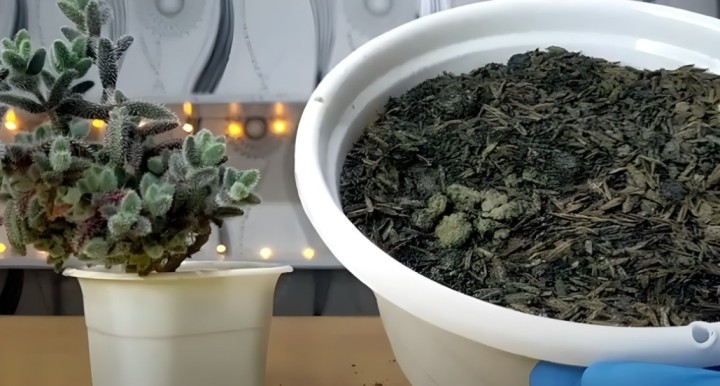
Summer Needs: The soil around pickle plants should drain well during the summer months to prevent root rot.
Using a commercial soil mix or mixing equal parts potting soil, perlite, and coarse sand will work for cactus and succulents. Allow the soil to dry completely between waterings and water the plant deeply but infrequently.
Winter Needs: Pickle plants require very little water during the winter. If you live in an area with a hot climate, you might be able to water them less often. It is recommended that you let the soil dry completely between waterings.
Spring and Fall Seasons: It is better to water pickle plants more frequently in the spring and fall than in the winter. Water the soil only when the soil is dry after it has dried out.
Temperature Requirement
Pickle Plant thrives in a wide range of temperatures and is often called the pickle plant or ice plant. You can keep your pickle plant happy all year round by following these tips:
Summer: Summer temperatures between 65°F and 85°F (18°C and 29°C) are ideal for pickle plants. Heat can stress them, but they can tolerate occasional spikes in temperature.
Winter: It is surprising how cold-hardy pickle plants are, surviving temperatures as low as 25°F (-4°C). You should, however, bring your pickle plant inside or protect it from frost if you live in an area with harsh winters.
Spring and Fall: Pickle plants grow and bloom best in the spring and fall when temperatures are mild. These seasons should be kept between 50 and 75 degrees Fahrenheit (10 and 24 degrees Celsius).
Humidity Requirement
Ice Plant, is a succulent that thrives in environments with low humidity. Even in the summer, it doesn’t require additional humidity. Plants can be damaged by high humidity, as fungal diseases can develop.
Summer: The pickle plant will need to be watered once or twice a week during the summer. Between waterings, allow the soil to completely dry out.
Winter: Watering can be reduced to once a month or once every two weeks during the winter. During this time, the plant goes dormant and requires less water.
Spring and Fall: Pickle plants should be watered once a week in spring and fall. As the plant grows, it will require more water during this time of year.
There is no need for much humidity when it comes to Pickle Plant. Water plants sparingly and avoid misting them between waterings.
Fertilization Requirement
Pickle plant, grows in well-drained soil and thrives in bright sunlight. Despite their charming appearance, these plants require modest fertilization.
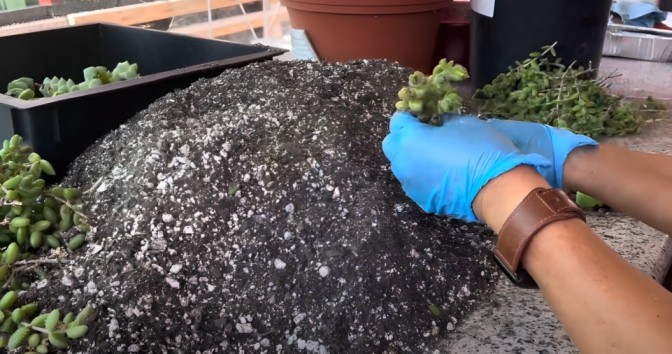
Spring and Summer: A diluted balanced fertilizer specifically formulated for succulents can be applied during the active growing season, spring and summer. The fertilizer should be applied once a month, following the instructions carefully.
Fall and Winter: Allow the plant to rest and conserve energy in the fall and winter by reducing or eliminating fertilization altogether. It is not necessary to feed pickle plants heavily during their dormant period since they are naturally drought-tolerant.
Overall Fertilization Tips
- Fertilizer should always be diluted to half strength to avoid overfeeding.
- The plant should be thoroughly watered before and after fertilization to prevent root burn.
- Fertilize during periods of hot, dry weather.
Potting Requirement
It is important to use a potting mix that mimics Delosperma echinatum’s native desert habitat in order to grow the charismatic pickle plant.
The addition of perlite or coarse sand to a cactus mix during the summer months allows excess water to escape and prevents root rot.
Consider using a slightly larger pot as winter approaches in order to accommodate root growth. Maintain moderate watering and fertilizer dilutions through spring and fall to promote your pickle plant’s growth.
This simple potting adjustment will enable you to enjoy the captivating beauty of Delosperma echinatum indoors or outdoors all year long.
Delosperma Echinatum or Pickle Plant Propagation
This comprehensive guide to propagating Delosperma echinatum will ensure success in multiplying these charming succulents if you’re ready to expand your pickle plant paradise.

There are Four methods for Propagation, stem cutting, leaf propagation, Division and Seed propagation
Stem Cuttings
Pickle plants are propagated by stem cutting, which is a straightforward and effective method. Here’s a step-by-step guide:
- Make sure the cuttings you choose from your mature pickle plant are healthy and non-flowering. A callus at the end of a stem that is 3-4 inches long is a sign of a healthy stem.
- Cuttings should be prepared by making a clean cut just below the node, where leaves emerge from the stem, with a sharp, sterilized knife or pruning shears. Make sure all lower leaves are removed so that the stem can be rooted.
- It is important to allow the cut end of the stem to dry and callus over for a few days in order to prevent moisture loss and promote root growth.
- To ensure optimal aeration and drainage, choose a cactus or succulent potting mix that drains well.
- The calloused end of the stem should be dipped in rooting hormone, if desired, to encourage root growth. Assemble the potting mix, ensuring that the stem is upright.
- Keeping the soil moist requires misting the soil, avoiding overwatering. You should place your potted cutting in a bright, warm place that receives indirect sunlight.
- Check the soil moisture regularly and be patient: Rooting can take several weeks, so be patient. Between waterings, let the soil dry out a little.
Delosperma Echinatum Leaf propagation
Collecting the Leaves
Select robust, healthy leaves from the stems that aren’t blooming. Stay away from the base’s thick, woody ones.Twist the leaf slightly at the base until it separates on its own. Refrain from tugging since this may harm the stem.
Give the leaves two to three days to dry in a cool, shady area. This keeps the wound from festering and permits it to recover.
Setting the Leaves
Prepare a shallow container with drainage holes and a well-draining succulent mix.
As you arrange the leaves, make sure the base of the leaf touches the earth. Don’t entirely bury them.
Keep the soil slightly damp but not saturated by misting it lightly.
The container should be placed in direct, bright sunshine. Steer clear of the intense midday sun.
Take your time! 2-4 weeks may pass during rooting. Little roots will start to show themselves from the leaf bases.
The New Pickle Plants’ Care
Water sparingly when roots take hold, letting the soil dry out in between applications.
Increase the plant’s exposure to sunlight gradually.
Once the new plant seems healthy and has a few pairs of leaves, you may pot it separately using the same succulent mix in a container that drains well.
Division
It is easy to propagate larger pickle plants by division. Here’s how to do it:
- Pickle plants should be removed gently from their containers.
- The Root Ball Should be Divided into Smaller Sections With a Clean Knife or Your Hands: Gently divide the root ball into smaller sections, ensuring each one has a portion of the root system and a healthy stem.
- The divisions should be replanted in individual pots filled with a cactus or succulent potting mix that drains well. Let the soil settle by watering lightly.
- The potted divisions should be placed in an area with indirect sunlight that is warm and bright after they are divided. If the top inch of soil feels dry, monitor the soil moisture and water it.
Seed Propagation
Delosperma echinatum can be propagated from seeds as well as stem cuttings and divisions. Here’s a step-by-step guide:
- Seeds from a reputable supplier will increase your chances of germination.
- Seeds should be sown in seed trays filled with well-draining succulent or cactus potting mix. Sprinkle seeds over the soil after moistening it.
- Keep the seed tray humid by covering it with plastic wrap or a clear dome. Keep the soil moist but not soggy by misting it regularly.
- The seed tray should be placed in a warm, bright area with indirect sunlight.
- It can take several weeks for seeds to germinate. A low-humidity environment should gradually be introduced to seedlings once they emerge from their coverings. Light and moisture should be maintained consistently.
Additional Tips for Successful Propagation
- Sterilize tools to prevent diseases from spreading.
- To avoid root rot, make sure the roots are properly drained.
- Watering needs to be consistent and patient.
- Promote healthy growth by providing adequate light.
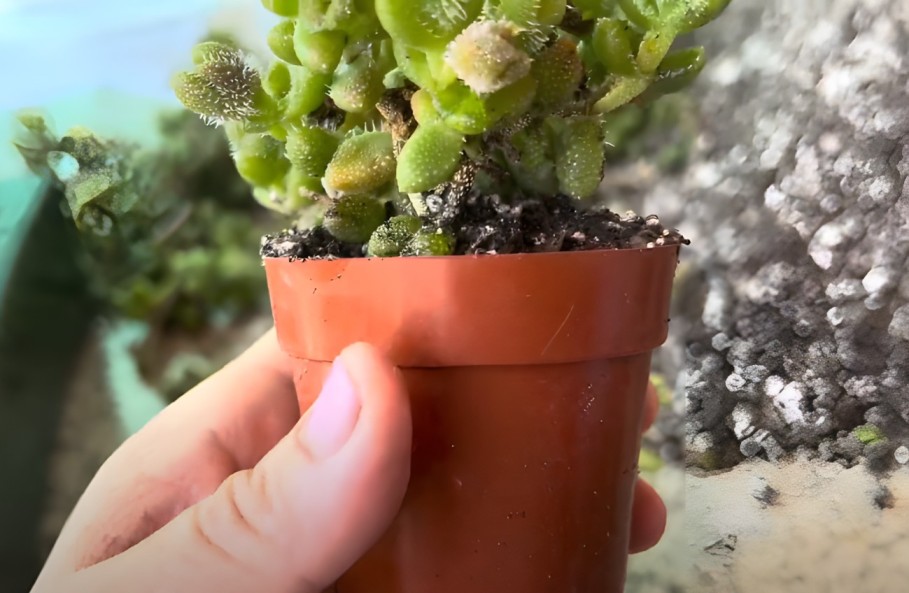
Pruning and Repotting
Pruning
Pickle Plant doesn’t require regular pruning, but light pruning can encourage air circulation and new growth. The stems can be gently trimmed back if they become overly leggy or damaged, or if they become dead or damaged.
Repotting
It is only necessary to repot Ice Plant every two to three years because it thrives in slightly pot-bound conditions. Make sure the pot you choose has drainage holes to prevent waterlogging.
It should be one to two inches larger than your current pot. For cacti and succulents, you should use a potting mix that drains well.
Blooming and Growth
Sun-Kissed Beauty: Ice Plant blooms best when exposed to adequate sunlight.
Watering Wisdom: The pickle plant’s blooming journey is dependent on watering. In order for it to grow healthy and flower, deep, infrequent watering sessions are essential.
Well-Drained Paradise: In well-draining soil, Pickle Plant thrives, preventing waterlogging and ensuring optimal root health. If you intend to plant a cactus or succulent, choose a potting mix with sufficient drainage holes so that excess water can escape.
Fertilization for Flourishing Blooms: Pickle plants don’t require heavy feedings, but a small boost of nutrients during their active season can encourage plentiful blooms.
Pruning for Perfection: By pruning regularly, you can maintain a compact shape and encourage new growth, potentially increasing flower production.
Delosperma Echinatum Growth Rate and Size
It usually takes Delosperma echinatum around 2-3 years to reach its full size. The plant has a compact and spreading growth habit, forming a low-growing groundcover that is usually 3-6 inches tall and 3-5 feet wide.
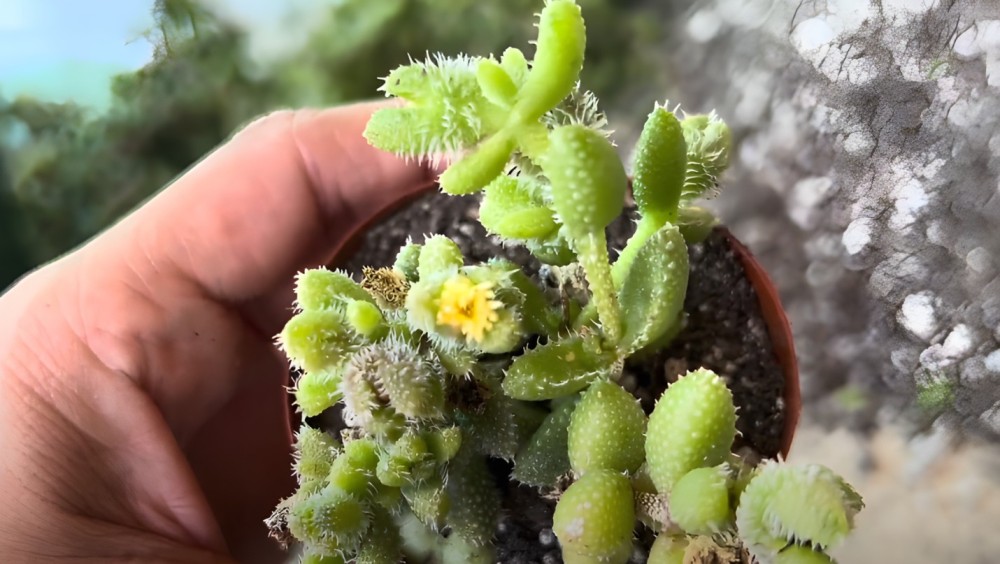
Pickle Plant Flower and foliage details
The pickle plant produces small, daisy-like flowers in white, yellow, or pink shades.
Typically blooming in spring or summer, these flowers add a splash of color to the plant’s striking foliage. There are plump, barrel-shaped leaves on the pickle plant, which remind one of small pickles.
Appearance and Fragrance
A triangular leaf with plump, glistening vesicles, resembling tiny ice crystals in the sunlight, is adorned with glistening, crystal-like vesicles. A variety of colors are represented by these leaves, ranging from vibrant greens to purples and bronzes.
A profusion of daisy-like flowers bloom during this plant’s blooming season, displaying shades of pink, purple, yellow, and orange. An air of delight is created by the fragrance of these blooms, reminiscent of sweet citrus and honey.
As it combines glistening foliage with sweet-smelling blooms, this plant offers a true sensory delight. With its beauty and fragrance, this succulent is a beautiful addition to any window sill or garden bed.
Pickle plant Problems and Solutions
Problem: Overwatering Causing Root Rot
Solution: Water sparingly and ensure well-draining soil. Ensure the soil dries out between watering sessions to prevent root rot.
Problem: Yellowing Leaves Due to Excessive Sun Exposure
Solution: Provide partial shade to this plant to prevent burning and yellowing.
Problem: Stunted Growth and Poor Flowering
Solution: Make sure you provide adequate sunlight and fertilize during the growing season to ensure healthy growth and vibrant blooms for this plant.
Problem: Pests Infestation, such as Aphids or Mealybugs
Solution: Control and eliminate aphids and mealybugs by regularly inspecting the plant for pests and using insecticidal soap or neem oil solutions.
Problem: Soil Compaction Hindering Root Development
Solution: Promote proper root development and soil aeration by loosening soil around plants frequently.
Problem: Lack of Blooms Despite Adequate Care
Solution: Use deadheading regularly to stimulate continuous blooming throughout the season.
Problem: Yellow or Browning Foliage from Frost Damage
Solution: Keep this plant protected from frost by covering them or bringing them indoors during cold weather.
Problem: Pest-Induced Yellow Spots on Leaves
Solution: Remove pest-infested leaves and treat them with insecticidal solutions to prevent further damage.
Problem: Leggy Growth and Sparse Foliage
Solution: Encourage bushier growth by pruning leggy stems; ensure that foliage is compact and lush by ensuring adequate sunlight.
Problem: Stress and Wilting in High Temperatures
Solution: If the weather gets hot, provide shade; water more frequently to reduce stress and prevent wilting.

Overwintering precautions
In preparation for the long slumber of Ice Plant, the days are getting shorter and the temperatures are cooling.
Hardy succulents can withstand temperatures as low as 25°F (-4°C), but with some extra care, they can survive the winter and emerge vibrant in the spring.
Here are some key tips for overwintering your pickle plant:
- Water less: As the plant grows slower, its water needs decrease. In order to prevent root rot, ensure that the soil dries completely between waterings.
- Light is still essential for photosynthesis during dormancy, even though it is less crucial. Pickle plants should be placed in a sunny location or supplemental light should be used.
- Ensure your pickle plant is protected from frost if you live in a harsh climate. You can keep it warm by covering it with a frost blanket or placing it in a sheltered area.
- Pests can threaten your plants, even while they are dormant. Be on the lookout for mealybugs, scale insects, and aphids, and treat them promptly if necessary.
Overwatering and Underwatering
Overwatering
A plant that has been overwatered can develop root rot, which is caused by a fungus that causes its roots to degenerate and eventually lead to plant death. Symptoms of overwatering include:
- Yawning leaves: Excess water can yellow and mush the leaves.
- A wilted plant appears limp and droopy, unable to support itself.
- Rotted roots can be brown or black, with a soft, mushy texture.
Water the soil once a week instead of every day to prevent overwatering. When the plant is dormant in the winter, avoid watering it during these months to allow excess water to escape.
Underwatering
It requires adequate water to thrive, even though Pickle Plant is drought-tolerant. It is possible for an aquatic organism to become dehydrated and stunted as a result of underwatering. Underwatering can cause the following symptoms:
- It is possible for the leaves to appear shrunk and wrinkled, lacking the usual plumpness that they normally have.
- Dropping leaves is a sign that the plant needs to conserve moisture.
- Plants that lack water may experience slow growth or even stop growing altogether.
When your pickle plant is completely dry, water it deeply to prevent underwatering. Make sure the soil does not completely dry out during the summer months.
Pests
- Pickle plants are stunted and yellowed by these cottony, tiny pests, known as mealybugs.
- A scale insect is an armored insect that feeds on the sap of pickle plants and leaves behind honeydew, a sticky substance that attracts ants and promotes fungal growth.
- Soft-bodied insects, aphids are found on pickle plants’ leaves and stems, feeding on the sap and discoloring leaves.
Diseases
- Plants suffering from root rot develop wilting, droopy leaves, and eventually die as a result of the fungal disease. It is common for root rot to be caused by overwatering and poorly draining soil.
- A fungal disease causing brown or gray lesions on pickle plants’ leaves, stems, and flowers, botrytis is also known as gray mold. A humid environment is a good place for botrytis to thrive, and it can spread rapidly.
- A powdery white coating forms on the leaves of pickle plants and affects their ability to photosynthesize, stunting growth and reducing flowering.
Toxicity in Humans
Despite being non-toxic to humans, Delosperma-echinatum leaves and stems can cause nausea, vomiting, and diarrhea when ingested. Most symptoms resolve on their own without the need for medical attention.
Pickle Plant Toxic to Cats and Dogs
Our feline and canine companions have a different story to tell. It is very Toxic to Cats and Dogs. Cats and dogs can be poisoned by saponins found in Pickle Plant. Ingestion of the plant can lead to a range of symptoms, including:
- Gastrointestinal upset: Nausea, vomiting, diarrhea
- Drooling: Excessive salivation
- Lethargy: Loss of energy and enthusiasm
- Neurological signs: Tremors, incoordination
- Cardiac issues: Irregular heartbeat
Varieties
Delosperma-echinatum ‘Orange Delight’
In any garden or indoor area, this variety stands out with its orange flowers that resemble cheerful sunbursts.
Delosperma-echinatum ‘Whitewash’
In contrast to its emerald green foliage, ‘Whitewash’ features pure white flowers that give the plant a serene, elegant appearance.
Delosperma-echinatum ‘Lemon Ice’
A cheerful lemon-yellow bloom adds a touch of citrusy sunshine to any garden setting.
Delosperma-echinatum ‘Roseum’
There is something enchanting about the soft, pink flowers of ‘Roseum’, adding a touch of tenderness and charm to any setting.
Delosperma-echinatum ‘Variegata’
With a beautiful blend of cream and green variegation, ‘Variegata’ stands out in any collection.
Practical and aesthetic uses in gardens and landscapes
Outdoor Uses
- Defend your soil against erosion with Delosperma-echinatum, a dense, colorful groundcover plant.
- A rockery or xeriscape would be a great place for this plant because of its low growing habit and vibrant blooms.
- A container-grown Delosperma plant adds color and texture to patios, decks, and balconies.
Indoor Uses
- You can bring a touch of nature inside with Pickle Plant, an attractive and unique houseplant.
- Window Plant: It adds color to your home decor and thrives in bright sunlight.
- The vibrant blooms and foliage of Delosperma-echinatum create a cascading effect when planted in hanging baskets.
Cultivating Healthy Ice Plant: Essential Care Practices
Pickle plant, requires specific care to thrive. When it comes to watering (arrosage), it is crucial to maintain a balanced approach. Over-watering can lead to root rot, while under-watering may cause the plant to become seche (dry).
Consistent and moderate watering is essential for the well-being of the Ice Plant. Indoor care (indoor bakımı) involves providing ample sunlight and well-draining soil, ensuring the plant’s health and vibrant growth.
The plant is known for its hardiness and is winterhart, meaning it can withstand colder temperatures. This winterhard characteristic makes it a suitable choice for gardeners in various climates.
Delosperma-Echinatum Grow and Unique Characteristics
Propagation (ableger) of Ice Plant can be achieved through various methods such as bouture and comment bouturer delosperma-echinatum. Understanding the specific techniques for Ice Plant propagation is essential for expanding your succulent collection.
Additionally, the unique characteristics (augurkenplantje) of this succulent, such as its gherkin-like appearance and vibrant flowers (blüte), make it an attractive addition to any garden. To address specific issues, cuidados (care) for the plant include considerations for temperature, avoiding issues like browning or dying.
Whether you’re dealing with specific questions about achat or a kot (purchase or cat-related concerns), providing proper cuidados and entretien is key to a thriving Pickle Plant. These meticulous care practices extend to avoiding toxic elements, making it a safe option even for households with cats.
With a plethora of varieties, including mini and variegata, Delosperma-echinatum offers a diverse range of choices for succulent enthusiasts. In conclusion, understanding the intricacies of Pickle Plant care, propagation, and characteristics is fundamental for cultivating a healthy and vibrant succulent garden.
FAQs
What is the common name for Delosperma Echinatum?
Delosperma Echinatum is commonly known as the Pickle Plant or Ice Plant.
What family is Delosperma Echinatum in?
Delosperma echinatum belongs to the Aizoaceae family, also known as the Ice Plant family.
Why is my Delosperma Echinatum dying?
Delosperma Echinatum’s decline may be caused by a number of things, such as overwatering, insufficient sunshine, or poor drainage. In order to address any problems and restore the plant’s health, evaluate the watering schedule, make sure the soil drains properly, and offer enough sunlight.
Is Delosperma an indoor plant?
It is possible to grow Delosperma Echinatum indoors as a succulent houseplant, but it thrives best in full sunlight and in rich soil that drains well.
Can you eat a Pickle Plant?
Some people don’t like the taste of pickle plant’s leaves because of their slightly sour, salty flavor.
How long do pickle plants last?
Plants such as Pickle Plant are perennial, which means they can live for years if they are properly cared for.
Do pickle plants bloom?
Pink, purple, yellow, and orange daisy-like flowers are produced by Pickle plant.
Does a Pickle Plant grow fast?
Plants like Pickle Plant grow rapidly and can reach maturity within several years.
Is Pickle Plant rare?
Pickle plant is rare and unusual plant but some varieties there are nurseries and online retailers that sell pickle plant.
Why is my Pickle Plant turning red?
As a result of stress, such as drought or cold temperatures, pickle plant may turn red or purple.
What is the Pickle Plant called? and Is a Pickle Plant a cactus?
The Pickle Plant is commonly known as Delosperma Echinatum. And cactus is not Delosperma Echinatum. Aizoaceae also includes Mesembryanthemum and Carpobrotus, which are both succulents.
Do pickles need direct sunlight?
Direct sunlight is required for pickle plant to flourish. It should be placed in a sunny location outdoors or in a south-facing window.
What are some interesting facts about pickle plants?
It is native to South Africa, where pickle plant grows.
During drought conditions, pickle plant produces water-filled vesicles on its leaves.
Pollinators such as bees and butterflies are attracted to Delosperma Echinatum.
How often should you water a pickle plant?
Despite its drought-tolerant nature, pickle plant only requires watering when the soil is completely dry. Pickle plants usually need to be watered once a week in the summer, but only once a month in the winter.
How big does a pickle plant get?
Pickle plant can grow as tall as 2 feet and wide as 2 feet

